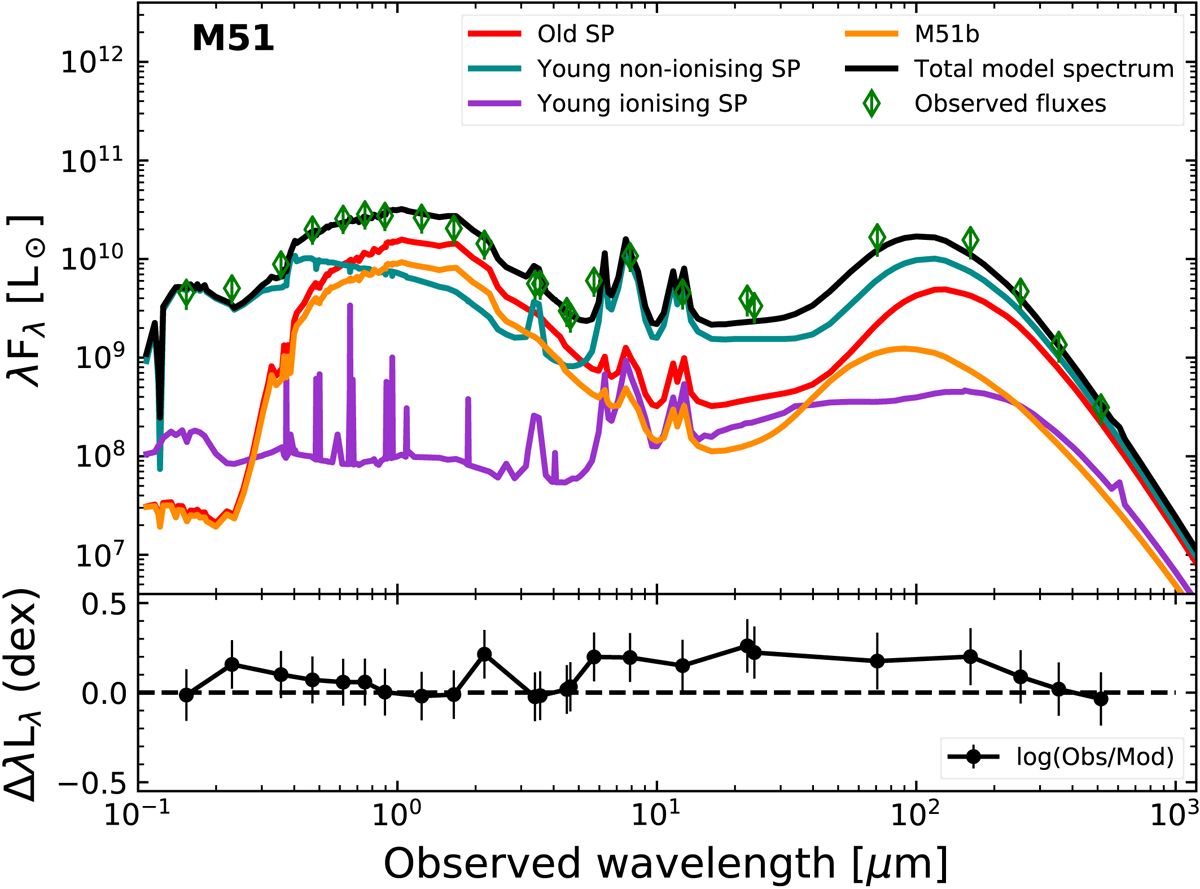Fig. 4.

Top panel: panchromatic SED of M 51. The black line is the best-fitting radiative transfer model, run at high-resolution. The green diamonds are the observed broadband luminosities of M 51 (see Table A.1). The red, cyan, and violet lines represent the SEDs for simulations with only the stellar components of M 51a: old, young non-ionising, and young ionising stellar population, respectively. The orange line represents the SED of M 51b. The dust component, which includes the dusty discs of both galaxies, is still present in these simulations. Bottom panel: difference in dex values between the observations and the mock luminosities.
Current usage metrics show cumulative count of Article Views (full-text article views including HTML views, PDF and ePub downloads, according to the available data) and Abstracts Views on Vision4Press platform.
Data correspond to usage on the plateform after 2015. The current usage metrics is available 48-96 hours after online publication and is updated daily on week days.
Initial download of the metrics may take a while.


